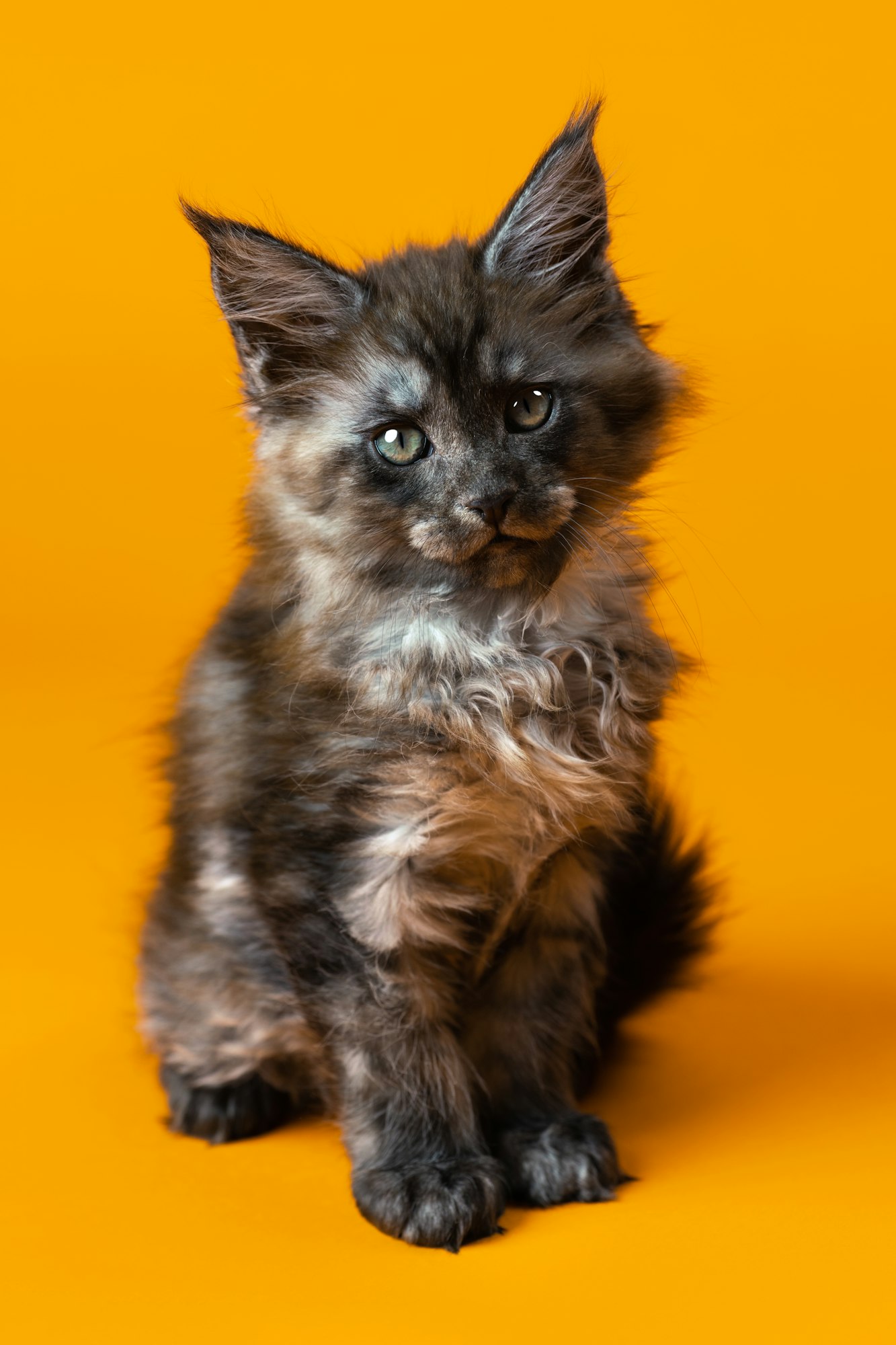Creating a feline-friendly home goes beyond simple comfort. Cats thrive in vertical spaces that encourage climbing and exploring. Think of cat trees, shelves, and wall-mounted perches that allow your feline friends to survey their domain. Additionally, dedicated scratching zones are essential to keep their claws healthy and furniture intact. This guide offers innovative ideas to transform your living environment into a true cat oasis, ensuring both playfulness and relaxation for your beloved pets. Embrace the joy of designing spaces that cater to your kitty's instincts!
Importance of Vertical Spaces for Cats
Cats are naturally inclined to explore vertical spaces, which play a crucial role in their health and behaviour. These elevated areas allow cats to engage in behaviours that are instinctive to them, such as climbing, perching, and observing their surroundings from a height. This not only provides physical exercise but also mental stimulation, which is essential for a cat's overall well-being.
Dans le meme genre : Creating a Stress-Free Feeding Space: Tips to Alleviate Social Eating Anxiety in Cats
Vertical spaces mimic the natural environments that cats would encounter in the wild. In nature, cats often climb trees to escape predators, hunt, or simply rest. By incorporating vertical cat spaces in your home, you provide an environment that satisfies these innate needs. This can lead to reduced stress and anxiety, contributing to a happier and healthier pet.
Creating a visually appealing vertical layout for your cat can be both functional and stylish. Consider adding cat trees, shelves, or wall-mounted perches that blend with your home decor while offering the cat ample opportunity to climb and explore. These solutions not only enhance your cat's quality of life but also add an interesting architectural element to your living space. Embracing vertical cat spaces is a practical way to support your feline friend's natural instincts.
A lire également : Creating a Stress-Free Feeding Space: Tips to Alleviate Social Eating Anxiety in Cats
Designing Vertical Spaces
Creating the perfect cat furniture design involves selecting materials that ensure both durability and safety. Opt for sturdy woods or reinforced plastics that can support your cat's weight without compromising stability. Soft, non-toxic fabrics can be used to cover surfaces, providing comfort while being easy to clean.
Types of Vertical Structures
Incorporating various types of vertical structures can cater to your cat's climbing instincts. Cat trees are a popular choice, offering multiple levels for exploration. Shelves mounted on walls provide elevated paths and perches, while ramps can connect different levels, accommodating older or less agile cats. Each structure should be securely fixed to prevent accidents.
Integrating with Home Decor
Blending cat furniture seamlessly into your home decor can be both aesthetically pleasing and functional. Choose colours and materials that complement your existing interior design. For example, wooden shelves can match hardwood floors, while neutral fabrics can blend with your living room palette. Consider positioning structures near windows, allowing your cat to bask in sunlight and enjoy outdoor views.
By thoughtfully designing vertical spaces, you can create an environment that supports your cat's natural behaviours while enhancing your home's visual appeal.
Scratching Zones: Why They Matter
Understanding a cat's instinct to scratch is crucial for any cat owner. Scratching is not merely a destructive habit; it is a natural behaviour that serves multiple purposes. Cats scratch to mark their territory, sharpen their claws, and stretch their muscles. Providing designated scratching zones can satisfy these instincts while preserving your furniture.
Integrating effective cat scratching solutions into your home can significantly reduce the likelihood of your furniture becoming a victim. Select materials that are both appealing to cats and durable, such as sisal or corrugated cardboard. These textures are not only satisfying for cats to scratch but also resilient enough to withstand repeated use.
When designing scratching zones, consider their placement and accessibility. Cats prefer areas where they spend most of their time, so situating scratching posts near sleeping or lounging areas can encourage their use. Additionally, vertical and horizontal scratching options cater to different preferences, ensuring all cats have a suitable surface to express their natural behaviours.
Key features of effective scratching zones include stability, variety, and accessibility. A stable structure prevents tipping, while varied textures and angles maintain a cat's interest. By creating these zones, you provide an outlet for your cat's instincts, promoting a harmonious living environment.
Types of Scratching Zones
Creating effective scratching post options is essential for accommodating your cat's natural instincts. Various designs and materials offer different experiences, ensuring your cat remains engaged and your furniture protected.
Overview of Scratching Post Designs and Materials
Scratching posts come in many forms, from vertical towers to horizontal pads. Materials like sisal rope, carpet, and corrugated cardboard are popular due to their durability and texture, which cats find satisfying. Vertical posts encourage stretching, while horizontal options cater to different scratching styles.
DIY Options for Personalized Scratching Zones
For a customised approach, consider DIY scratching zones. Using materials like sisal rope or carpet remnants, you can create unique designs that fit your home's aesthetic. Personalising these zones allows you to tailor the size, shape, and texture to your cat's preferences, making them more appealing.
Selecting the Best Scratching Zones Based on Cat Preferences
Understanding your cat's preferences is key to choosing the right scratching post options. Observe whether your cat favours vertical or horizontal surfaces, and select designs accordingly. Consider the post's height and stability, ensuring it withstands vigorous use. By aligning choices with your cat's habits, you can create a harmonious environment that meets their needs.
Enhancing Vertical Spaces with Accessories
Incorporating cat climbing accessories can significantly enrich your feline's vertical environment, offering both entertainment and comfort. Adding items like hanging toys, cosy beds, and interactive elements can transform a simple cat tree or shelf into a dynamic playground. These accessories not only provide mental stimulation but also encourage physical activity, essential for a cat's well-being.
Recommended Accessories for Vertical Spaces
Consider integrating various cat climbing accessories such as dangling toys and scratching pads. These additions can stimulate your cat’s curiosity and natural hunting instincts. Plush beds or hammocks can offer a restful retreat after a playful session, making the vertical space multifunctional.
Incorporating Climbing Toys and Tools
Strategically place climbing toys to encourage exploration. Use wall-mounted tunnels or bridges to connect shelves, creating a network of paths for your cat to navigate. This setup mimics the natural environment and satisfies their instinctual need to climb and survey their territory.
Safety Considerations
Ensure all cat climbing accessories are securely attached to prevent accidents. Regularly check for wear and tear, replacing items as needed. Choose non-toxic materials and avoid small parts that could pose a choking hazard. Prioritising safety ensures a secure and enjoyable space for your feline friend.
Creating a Feline-Friendly Home Environment
Designing a cat-friendly home involves more than just adding cat-specific furniture; it requires thoughtful arrangement and consideration of your pet's natural behaviours. Start by arranging your furniture to maximise your cat's engagement. Ensure there are clear pathways that allow your cat to navigate the home easily. Position furniture in a way that creates a series of steps or platforms, facilitating movement and offering various vantage points.
Establishing safe zones is crucial. These areas should be free from hazards and offer a retreat for your cat to relax undisturbed. Consider placing a cosy bed or a small shelf in quieter parts of your home, away from high-traffic areas.
Lighting plays a significant role in creating a cat-friendly space. Cats enjoy natural light, so position their favourite spots near windows. Incorporating plants can also enhance the environment, but ensure they are non-toxic to cats. Plants like cat grass or catnip can be particularly beneficial, providing both enrichment and a safe nibbling option. By considering these elements, you can create a harmonious living space that caters to your cat's instincts and comfort.
Maintenance and Care for Vertical Spaces and Scratching Zones
Maintaining cat furniture is essential to ensure your pet's safety and enjoyment. Regular cleaning is a crucial part of this process. Begin by vacuuming or brushing off loose fur and debris from vertical spaces and scratching zones. Use a mild, pet-safe cleaner to wipe down surfaces, focusing on areas that may have accumulated dirt or oils. This not only keeps the environment hygienic but also prolongs the lifespan of the materials.
Inspecting and Ensuring Safety
Regularly inspect your cat furniture for signs of wear and tear. Check for loose screws, unstable structures, or frayed materials that could pose a risk to your cat. Tighten any loose components and replace worn parts promptly. Ensuring that all elements are securely attached will prevent accidents and allow your cat to explore safely.
Recognizing When to Replace or Upgrade
Knowing when to replace or upgrade scratching zones is vital for maintaining an engaging environment. Look for indications such as excessive fraying or a lack of interest from your cat, which might suggest it's time for a change. Upgrading to new designs or materials can reinvigorate your cat's interest and ensure they continue to benefit from their scratching zones.
Inspiring Examples of Cat Oasis Designs
Creating a cat oasis in your home can be an exciting project, drawing inspiration from various real-life examples. These spaces are designed to cater to a cat's natural instincts while blending seamlessly with home decor.
Consider a minimalist aesthetic where sleek lines and neutral colours dominate. This style often incorporates floating shelves and chic cat trees, offering a modern look without compromising functionality. Alternatively, a bohemian style cat oasis might feature vibrant colours, eclectic furniture, and plenty of plants, creating a lively environment for your feline friend.
User-generated content provides a treasure trove of cat oasis inspiration. Many cat owners share their creative designs online, showcasing innovative uses of space and materials. For example, some have transformed unused corners into cosy nooks with layered cushions and hanging toys, while others have integrated climbing walls that double as art pieces.
By exploring these diverse styles and ideas, you can find the perfect balance between aesthetics and functionality for your cat oasis. Whether you prefer a sleek, modern look or a more eclectic, colourful space, these examples can help you create a haven that both you and your cat will love.






